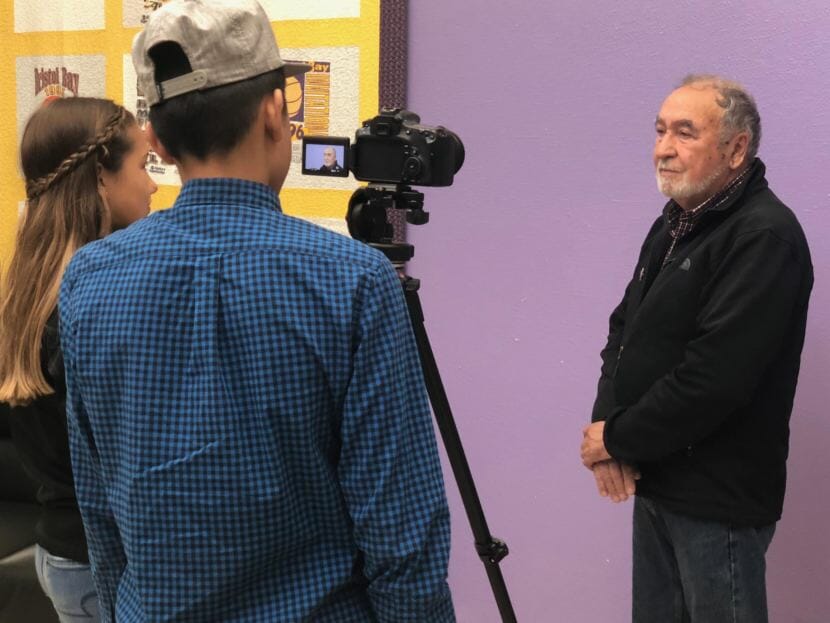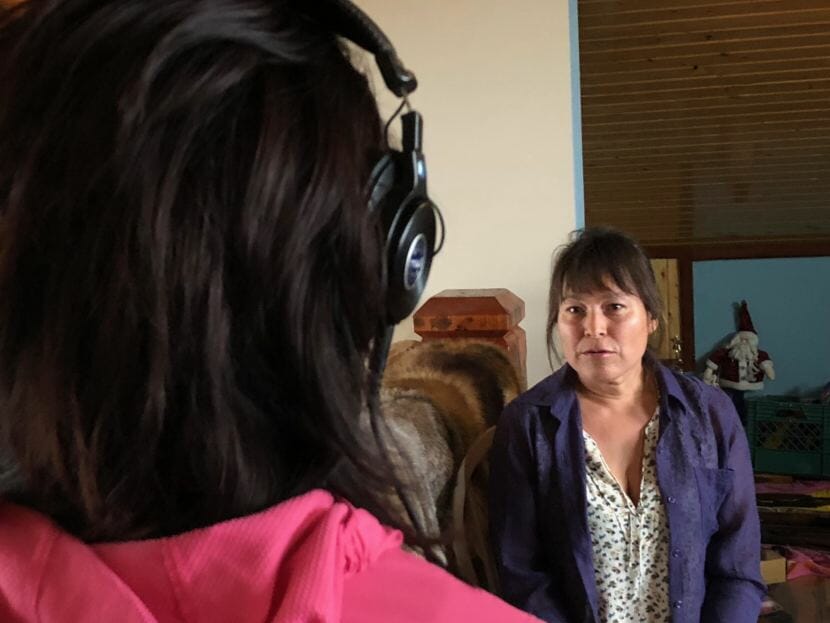
The workshop is called “Voices from the past: digital storytelling for the future.” As part of the NN Cannery History Project, each student produced a short video on part of cannery life, interviewing food cart workers to fishermen. Alicia Osburn explored the mug up tradition, beginning her video with a narration that gave way to other voices.
“When my dad worked at the cannery, I went to the mess hall to eat and sometimes went to the Mug Up, too. It was exciting because there were lots of people.”

“When we use that term ‘mug up’ everyone knows it’s time for coffee or tea,” a woman explained in the video. “Mom and grandma would say chayuq – have some tea.”
“They’d work from 8 to 10,” a man said. “Then they’d have a mug up, about a 15-minute break. Then, of course, they would have lunch. Then at 3 they’d have a mug up again.”
19 community members participated, their interviews interspersed with grainy footage and photographs of cannery workers. As part of the project, students also heard from each other.
“My topic is about the fisherman’s perspective,” Nathan Hansen said in a peer interview. “We interview people and I ask them about how they fished and what they did and what was different back in the day. I liked interviewing my grandpa a lot. I don’t know, I just got to know him a little bit more.”
The short videos are powerful, in part, because the students, raised in the industry, are examining their place in it. Carly Eldridge’s project looked at women’s experiences in the fishery.
“I grew up set netting in Naknek, and for the past two years,” she said. “I have subsistence fished with my dad. As a young female in this fishery, I have learned many things I think are important to share with you.”
The project builds on a legacy of cultural preservation. It was inspired by Uutuqtwa: An Historical Magazine of the Bristol Bay Area, which Bristol Bay high school students produced in the 1970s and 80s. LaRece Egli assisted Marie Acemah of See Stories in guiding the students. She said their work provides a glimpse into a part of the fishery that has often been overlooked.
“There’s almost no record that has been developed in academia that really tells the story of the cannery worker,” Egli explained. “So, that’s part of the focus of this project, to really shine a light on daily cannery life.”
The NN Cannery History Project received an Underrepresented Communities grant from the National Park Service, and director Katie Ringsmuth decided to put $10,000 toward the workshop. The Bristol Bay Economic Development Corporation matched that money.
“What we want to reinforce with the students is that their history matters, that they come from a placethat has extraordinary history. And that it’s important, not just to Bristol Bay, but to Alaska as well as the entire nation,” Ringsmuth said.
These projects were informed by the students’ experience growing up around the cannery. And hopefully, another group will build on that work in a class next year.
